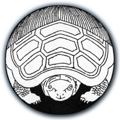I’m in Victoria, B.C., with my mom. We’re here because a second biopsy of her jaw yielded a positive diagnosis: squamous cell carcinoma. She just completed a series of ten radiation therapy treatments, or fractionations, in the hopes of shrinking the tumor. Left unchecked, the cancer would most likely eat into her jawbone, resulting in debilitating pain. Of course, there was a chance that the radiation would also result in debilitating pain caused by osteoradionecrosis, or bone death. So there you go. Old age is not for the faint of heart.
On the first day she was brought into a dark and cavernous room called the Simulator. Isolated in the center was a table on a dais, where they laid her, face up. A technician stood over a stainless steel vat of hot water, cooking a square sheet of white plastic mesh. Once the plastic was hot and malleable, they placed it across mom’s face, stretching and pressing it around the contours of her nose and jaw, over her cheekbones and into her eye sockets, pulling it down around her ears until eventually it reached the table, where it was screwed down and left to harden. A network of red laser beams, crisscrossed the darkened room, mapping out the paths the x-rays would take. Once the cancerous target had been sited, the mask was gridded off with felt markers and removed.

From here, we were taken to a treatment room—this being the Pacific Northwest, all the radiation rooms are given the names of trees, and we were assigned to Fir, which was next to Arbutus. Fir is the home of Linac, or the linear accelerator, which is a large L-shaped machine that generates x-rays and aims them at the tumor site. Once a day, for ten days, mom's head was buckled down onto the table and 300 centigrays (CGYs) of precisely directed photon x-rays beamed from two angles into her jaw.

The treatments themselves were quick and painless. The skin around the tumor site got a little bit inflamed, and she had some trouble swallowing, but the side effects were minor, consisting primarily of intense fatigue, loss of appetite, and general debilitation and lethargy. The trick was to keep her awake long enough to eat, but she was losing weight and getting weaker and weaker. After a week or so, she could barely walk the ten steps from the bedroom to the bathroom.
That's when we thought we were losing her. Her pulse was erratic, and she was having trouble breathing. I heard fluid in her lungs. She was fretful, the way people get when they are actively dying. She would stare wide-eyed at the white ceiling, and from time to time she’d laugh and point upwards, gesturing wildly. She was trying to tell me something, or talk to someone, but she’d stopped using words I could understand. I could tell she didn't recognize me. Sometimes she'd start speaking in Japanese. She was sleeping about twenty-three hours a day. But somehow she managed to go on.
Over the course of the treatment and the weeks that followed, she had a couple of bad dips like this, but each time she'd stabilize again. Finally, one night as I was tucking her in, I gave her a kiss on the forehead.
"Good night, my little sweetie pie...," I said.
She looked up at me for the longest time searching my face. Finally she smiled.
"Good night, big pie," she said.
That's when I knew she was going to be alright.
It's been a month since she started the radiation treatments and she is back on her feet, walking in the park, climbing stairs, enjoying her food, and gaining weight again. The radiation treatment was palliative and never meant to cure the cancer, but rather just to control its metastasis, and it has succeeded in doing this. The tumor is still there, but it has shrunk dramatically. Mom rarely notices it, and because of her Alzheimer's, she has no memory of being sick at all, which seems just fine to me.
